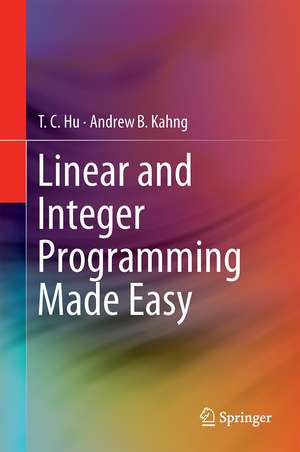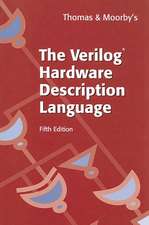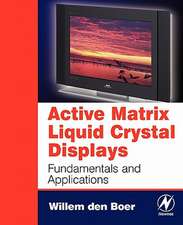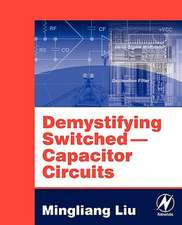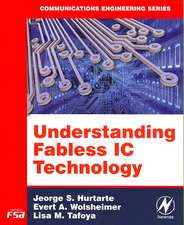Linear and Integer Programming Made Easy
Autor T. C. Hu, Andrew B. Kahngen Limba Engleză Hardback – 13 mai 2016
Readers will learn to cast various problems that may arise in their research as optimization problems, understand the cases where the optimization problem will be linear, choose appropriate solution methods and interpret results appropriately.
| Toate formatele și edițiile | Preț | Express |
|---|---|---|
| Paperback (1) | 446.47 lei 6-8 săpt. | |
| Springer International Publishing – 26 mai 2018 | 446.47 lei 6-8 săpt. | |
| Hardback (1) | 453.78 lei 6-8 săpt. | |
| Springer International Publishing – 13 mai 2016 | 453.78 lei 6-8 săpt. |
Preț: 453.78 lei
Nou
Puncte Express: 681
Preț estimativ în valută:
86.84€ • 90.33$ • 71.69£
86.84€ • 90.33$ • 71.69£
Carte tipărită la comandă
Livrare economică 14-28 aprilie
Preluare comenzi: 021 569.72.76
Specificații
ISBN-13: 9783319239996
ISBN-10: 3319239996
Pagini: 141
Ilustrații: X, 143 p. 24 illus., 1 illus. in color.
Dimensiuni: 155 x 235 x 15 mm
Greutate: 0.4 kg
Ediția:1st ed. 2016
Editura: Springer International Publishing
Colecția Springer
Locul publicării:Cham, Switzerland
ISBN-10: 3319239996
Pagini: 141
Ilustrații: X, 143 p. 24 illus., 1 illus. in color.
Dimensiuni: 155 x 235 x 15 mm
Greutate: 0.4 kg
Ediția:1st ed. 2016
Editura: Springer International Publishing
Colecția Springer
Locul publicării:Cham, Switzerland
Public țintă
Upper undergraduateCuprins
Preliminaries.- Introduction.- Dimension of the Solution Space.- Introduction to the Simplex Method.- Duality and Complementary Slackness.- Revised Simplex Method.- Column Generating Technique.- The Knapsack Problem.- Asymptotic Algorithms.- The World Map of Integer Programs.- Linear and Integer Programming in Practice
Notă biografică
T.C. Hu received his B.S. in Engineering from the National Taiwan University in 1953, M.S. in Engineering from the University of Illinois in 1956, and Ph.D in applied Mathematics from Brown University in 1960. From 1960 to 1966, he was with the IBM Research Center. Dr. Hu was appointed Associate Professor in the Dept. of Computer Science at the University of Wisconsin in 1966 and Full Professor in 1968 (also permanent member of the Mathematics Research Center). In 1974, Dr. Hu was appointed Professor (Step IV) in the Department of Applied Physics and Information Science at the University of California, San Diego, and was promoted to Professor (Step VIII) in 1989. His research contributions can be classified into six areas: (I) Network Flows and Integer Programming; (II) Combinatorial Algorithms; (III) Math Computing; (IV) VLSI Physical Design; (V) Operations Research; and (VI) Plasticity.
Andrew B. Kahng (b. Oct. 1963, San Diego, CA) received the A.B. degree in applied mathematics (physics) from Harvard College, and from June 1983 to June 1986 was affiliated with Burroughs Corporation Micro Components Group in San Diego, where he worked in device physics, circuit simulation, and CAD for VLSI layout. He received the M.S. and Ph.D degrees in computer science from the University of California at San Diego. He joined the UCLA computer science department as an assistant professor in July 1989, and became associate professor in July 1994 and full professor (at age 34) in July 1998. In October 2004, Professor Kahng co-founded Blaze DFM, Inc., an EDA software company that delivered new cost and yield optimizations at the IC design-manufacturing interface. He served as CTO of the company during a two-year leave of absence, returning to the university full-time in September 2006. Professor Kahng has served on the editorial boards of IEEE Transactions on VLSI, IEEE Transactions on Circuits and Systems I, IEEE Design and Test (where he contributes the regular column, "The Road Ahead"), and the Research Highlights section of the Communications of the ACM. He has been a member of the executive committee of the MARCO Gigascale Systems Research Center since the center's inception in 1998.
Textul de pe ultima copertă
Linear and integer programming are fundamental toolkits for data and information science and technology, particularly in the context of today’s megatrends toward statistical optimization, machine learning, and big data analytics. Drawn from over 30 years of classroom teaching and applied research experience, this textbook provides a crisp and practical introduction to the basics of linear and integer programming. The authors’ approach is accessible to students from all fields of engineering, including operations research, statistics, machine learning, control system design, scheduling, formal verification, and computer vision. Readers will learn to cast hard combinatorial problems as mathematical programming optimizations, understand how to achieve formulations where the objective and constraints are linear, choose appropriate solution methods, and interpret results appropriately.
•Provides a concise introduction to linear and integer programming, appropriate for undergraduates, graduates, a short course or boot camp, or self-learning;
•Targets not only computer scientists and engineers, but those in management science and operations research as well;
•Emphasizes basics and intuitive concepts, and gives corresponding numerical examples;
•Includes exercises to test and reinforce the concepts introduced, along with a website containing additional material matched to the book’s contents.
•Provides a concise introduction to linear and integer programming, appropriate for undergraduates, graduates, a short course or boot camp, or self-learning;
•Targets not only computer scientists and engineers, but those in management science and operations research as well;
•Emphasizes basics and intuitive concepts, and gives corresponding numerical examples;
•Includes exercises to test and reinforce the concepts introduced, along with a website containing additional material matched to the book’s contents.
Caracteristici
Provides a concise introduction to linear and integer programming, appropriate for undergraduates, graduates, a short course or book camp, or self-learning; Targets not only computer scientists and engineers, but those in management science and operations research as well; Emphasizes basics and intuitive concepts, and gives corresponding numerical examples; Includes exercises to test and reinforce the concepts introduced, along with a website containing additional material matched to the book's contents. Includes supplementary material: sn.pub/extras
